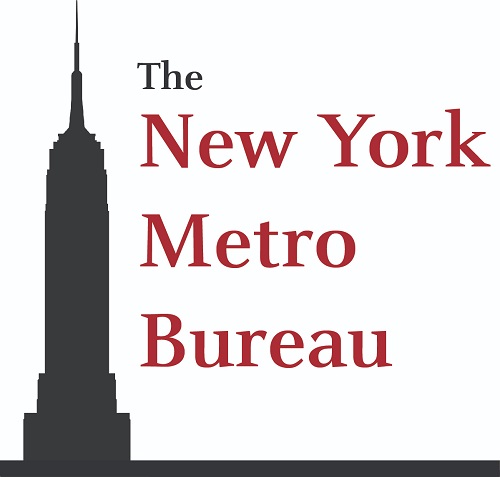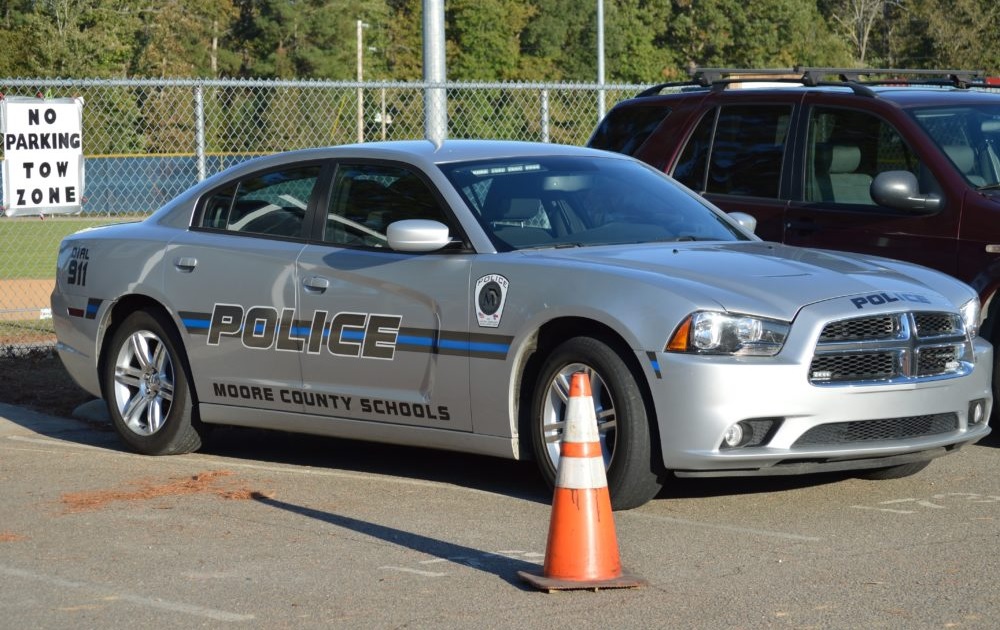For Madeline Borrelli, a special education teacher in Brooklyn, N.Y., having NYPD-trained law enforcement officers in schools is a cut-and-dry issue: “School safety agents,” she said, using their official job title, “ … should not exist at all.”
Among those countering that viewpoint is Derek Jackson, director of law enforcement for Teamsters Local 237, the union representing 5,000 uniformed school safety agents, also known as school resources officers in many locales across the country, who will be assigned to New York City’s public schools when they fully reopen in September.
“Saying SSAs abuse children is a false narrative,” said Jackson, referring to criticism of those officers. “They’re not stupid, they’re not bullies. They’re community members, they’re mentors and they’re one of the main factors why kids are safe in New York City schools.”
 As a years-long debate over the prudence of employing sworn law enforcement officers in schools continues, at least 33 of the nation’s roughly 13,800 public school districts, since May 2020, have shrunk or eliminated that workforce. Recently, the city council of Alexandria, Va., as one example, voted — “narrowly and against the wishes of school leaders,” according to The Washington Post — to end its three-decade-old school resource officer program. Its $800,000 in annual funding will be redirected to mental health initiatives for students, school officials said.
As a years-long debate over the prudence of employing sworn law enforcement officers in schools continues, at least 33 of the nation’s roughly 13,800 public school districts, since May 2020, have shrunk or eliminated that workforce. Recently, the city council of Alexandria, Va., as one example, voted — “narrowly and against the wishes of school leaders,” according to The Washington Post — to end its three-decade-old school resource officer program. Its $800,000 in annual funding will be redirected to mental health initiatives for students, school officials said.
Also last year, the Oakland Unified School District in California voted unanimously to sever a contract with the Oakland Police Department, eliminating a 67-member team of school resource officers. That $4 million budget will go, instead, toward such efforts as hiring more clinical social workers and retraining some of those officers in conflict resolution, restorative justice and de-escalation. (When the Oakland schools in 2008 became one of the first to experiment with restorative justice in one of its failing middle schools, its student suspensions dropped 87% and student violence fell overall during the ensuing three years, according to the Center for Public Integrity.)
As another example, a September 2020 report by Citizens for Juvenile Justice and Strategies for Youth found that Massachusetts schools with police reported 3.5 times as many student arrests, including for low-level offenses, as schools without them.
Case studies: School police thwarted potential carnage
Nevertheless, a 2020 Department of Justice report cited 12 case studies in which trained school resource officers were deemed as integral to averting violence by students with guns and explosives who’d threatened to commit single or mass murders.
“Most of the roughly 33 school districts that have either made decisions to remove SROs, or to make significant changes to what they do, weren’t trained by us,” said Mo , executive director of the National Association of School Resource Officers.
“So, the question that we’d like to have answered is ‘Was there a problem at the core of the program?’ Because that could have been remedied with a good selection process, good training and good collaboration, instead of throwing the baby out with the bathwater.”
He continued: “If you remove an SRO that has been carefully selected and specifically trained by us — in implicit bias, diversity, adolescent brain development, special education, special needs, adolescent mental health and knows how to understand students that have those classifications and better de-escalate those situations — then the only option if something happens is to call the police who will send an officer who isn’t trained and doesn’t have a relationship with students and faculty. Which is most likely not going to end well.”
In New York City, opponents and supporters of school police
When the New York City Council issued a February 2021 proposal whose provisions include transferring school safety agent oversight from the NYPD to school officials and barring school police from making arrests, using handcuffs or wearing their uniforms on school grounds, the New York City School and Safety Coalition of parents and students rallied for those agents to remain in place and under NYPD jurisdiction. They cited concerns about rising crime and violence in city schools, including the April 29 murder of 17-year-old Devonte Lewis. He was fatally shot outside Urban Dove Charter School in Brooklyn; a 15- and a 16-year-old have been criminally charged with killing Lewis.
Yet, during a June street rally, about 200 students, according to the New York Post, voiced their opposition to school resource officers. Concerns that the presence of those officers increases chances of students being suspended or facing other disciplinary actions, including arrest and potential incarceration, are what drive opposition to New York City’s school safety agents.
A 2016 national study, published in the Journal of Policy Analysis and Management, found that arrest rates of children increased markedly after schools, starting in 1999, began receiving federal grants to hire police officers. During the studied years, each additional officer led to about 2.5 extra in-school arrests annually of children as young as 7.
“We need to remove all vestiges of policing, policing culture and policing infrastructure from our schools,” said Borrelli, a Brooklyn-based organizer with Teachers Unite, a New York City advocacy organization whose members are educators, students and parents.
School environments where students and teachers feel safe and thrive are a right aim, she said. But they do not address what she sees as the poverty, insufficient school funding and other systemic issues that aren’t resolved just because police are present.
“We remove police from schools and we can replace it with things like restorative justice coordinators, child care professionals, youth advocates, parent coordinators, community outreach coordinators, positions that community members could fill that are not harmful to students and are not policing,” Borrelli said.
Students of color are the main ones who are suspended
An April 2021 report by the Center for Popular Democracy, partnering with several other race-equity focused groups, found that 91% of all suspensions in New York City, Elizabeth, N.J., Clark County, Nevada and Salem-Keizer, Oregon public schools were of Black and Latinx students. Those students comprised 66% of all enrollees in those districts.
Such suspensions and the arrests they sometimes lead to are an unfortunate reality, said Jackson, the Teamster’s member directing New York City’s school safety agents. Some arrests that his officers make are also necessary, he said.
“What they don’t tell you,” added the retired New York City police officer and former school teacher and dean, referring to some research, “is that there are roughly 1.1 million students in the New York City school system and of the estimated 1,200 arrested, 600 were for serious felonies like assault, robbery, grand larceny and rape.”
He added that, “School safety agents aren’t suspending children from school or removing children from classrooms. Ninety-five percent of the time, when SSAs do have to interact with a child, it’s because of the interaction that child had with another adult in the school.”
Nevertheless, said Anna Dor, a 2021 graduate of Leaders High School in Brooklyn, “The real problem is … the fact that schools, especially in New York City, are still segregated. And that the ones in lower-income communities, with primarily students of color, tend to have more policing.”
One potential remedy, she added, might be developing restorative justice programs that let students and adult support staffers mediate, intervene in and de-escalate conflicts that find their way into the classroom.
“One of the reasons that schools can have an outbreak of violence and be dangerous is because students are not given opportunities like that,” Dor said.
Oakland, Cali. schools “had a culture of calling the police”
Schools in Oakland are among those that have taken an approach akin to what Dor suggests.
“We had a culture of calling the police for almost anything,” John Sasaki, the district’s communications director, wrote via email. “Implementing our new plan will enable us to minimize the concerns by uplifting and supporting conditions around relationships, de-escalation and restorative practices as our way of promoting safety.”
The plan includes training for school faculty and administration in “police free response” and a “discipline and intervention matrix” designed to steer faculty and administration away from suspensions and expulsions.
In certain ways, New York City is following Oakland’s model.
Efforts to create healing-centered schools, connecting distressed students with adults who can aid in their social-emotional development and mental wellness were launched in 2019, according to a statement that New York City Department of Education Deputy Press Secretary Nathaniel Styer provided. In April 2021, the mayor and schools chancellor announced what they called a historic investment funding, among other professionals and programs, 500 new school social workers and 100 new school psychologists.
“Creating schools that are both safe and welcoming for all students is at the core of this administration’s work, and we have made important improvements to school safety to drive those record decreases in police interventions, arrests, and suspensions,” according to spokesman Styer’s email, also citing what he said were declining police interventions in schools.
Between the 2016-17 and 2019-20 school years, for example, the rate of police calls to schools fell 5%, student arrests by 60% and criminal court summonses by 80%. Suspensions have decreased by approximately 40% since 2013, Styer wrote.
“In addition to our recent investments in new social workers and more community schools, bringing SSAs back to the DOE,” he added, of returning oversight of resource officers to school officials, “as valued members of the school community is part of ensuring all of our students have safe schools and someone to go to when in crisis.
Even if for different reasons, some remain unconvinced that that’s a move in the right direction.
“This is not the time,” SSA director Jackson said, “to pull school safety out from under the NYPD because the DOE cannot manage safety.”
And teacher Borrelli: “If anything, transferring SSAs to the DOE just serves to further ingrain policing into the New York City schools budget and may, in fact, make it actually harder to remove these positions within our schools.”






























